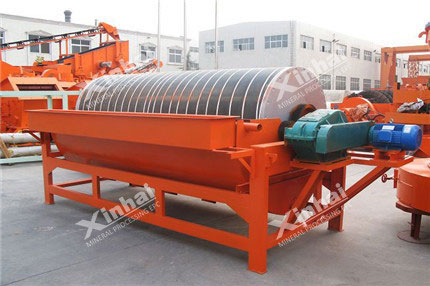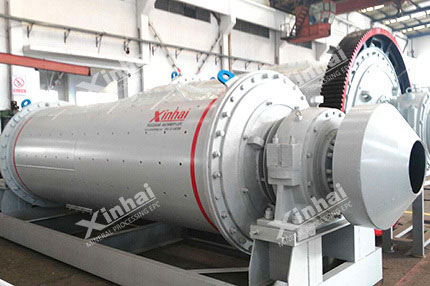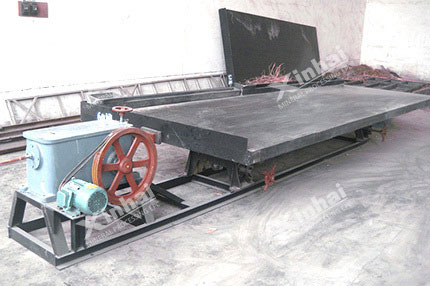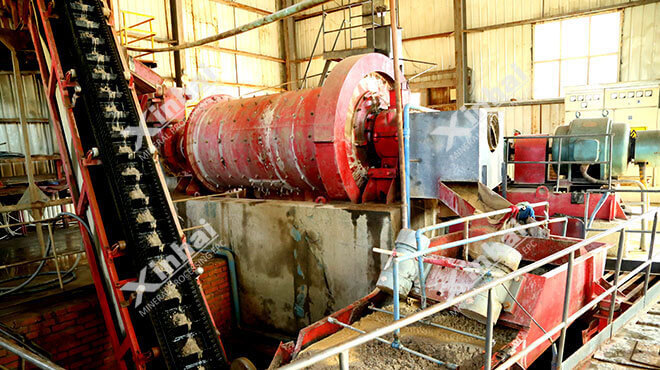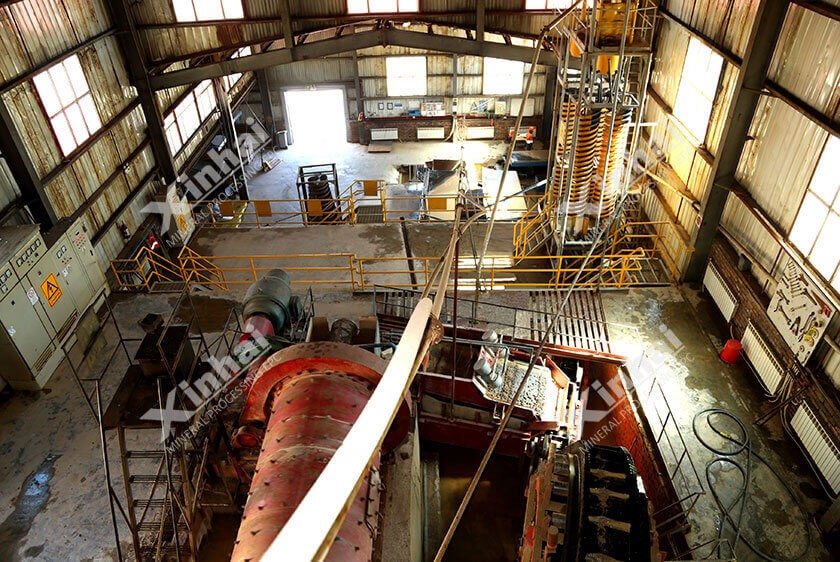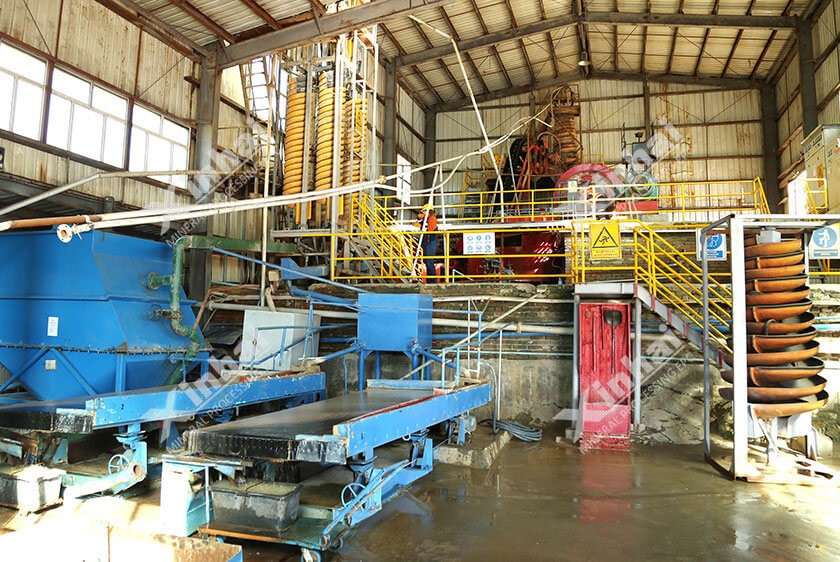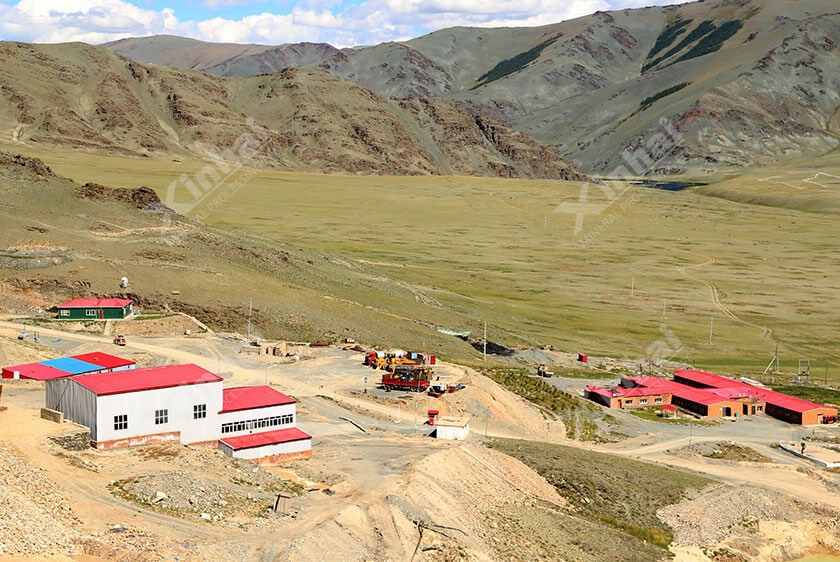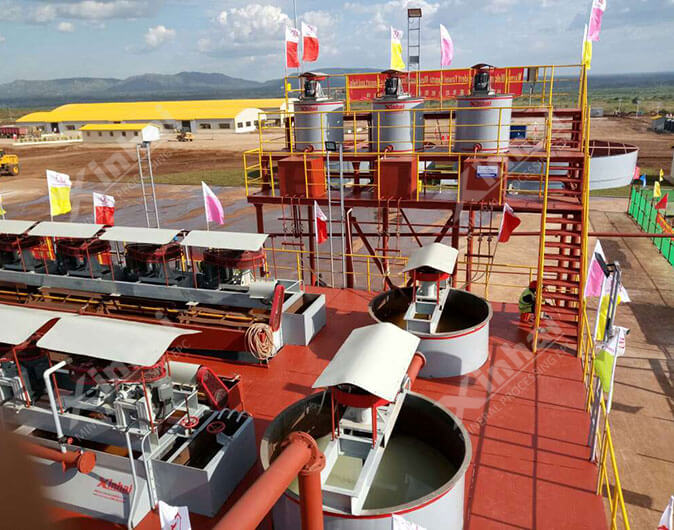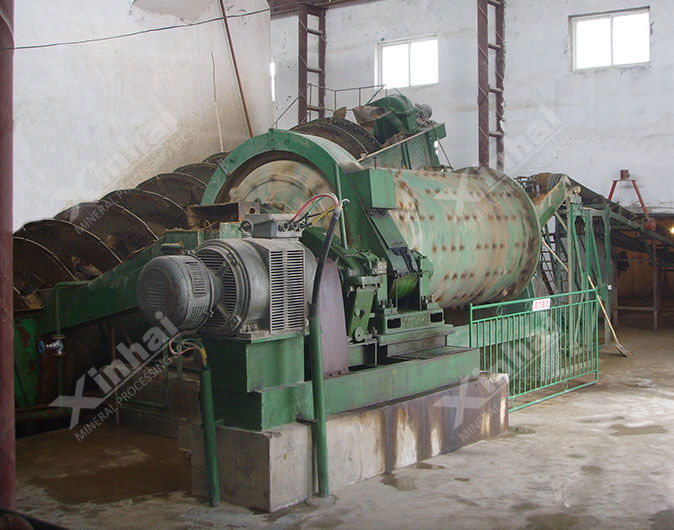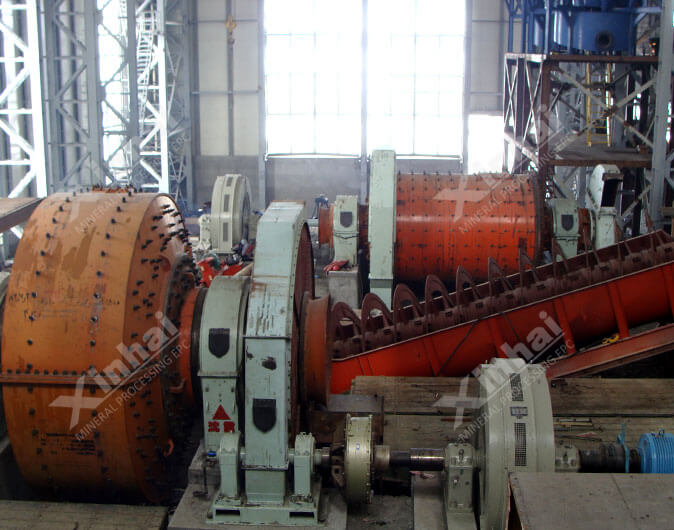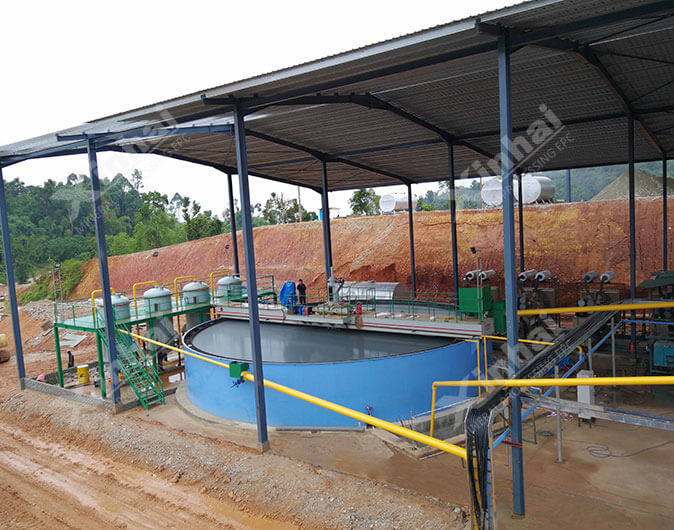Xinhai Solution
-
01
Crushing: the raw ore was stockpiled in the dump and transported by loader to the raw ore bin. Then it was fed by chute feeder to the jaw crusher to gain a product size of ≤25mm. Crushed materials were transported by belt conveyor to the fine ore dump.
-
02
Grinding and gravity concentration: the crushed materials were transported by belt conveyor to the rod mill. The product was first treated in the jig to gain large-size materials. Then undersize materials were classified in the spiral classifier, where qualified materials entered the gravity concentration stage and coarse materials returned to the rod mill for regrinding.
-
03
Qualified materials from grinding were pumped to the continuous hydraulic classifier, with fine slime separated and treated by the shaking table. The classifier underflow entered the first spiral chute unit for roughing through the distribution box; concentrates were treated by the shaking table for concentration, middlings returned to the spiral classifier to further liberalize tungsten, and tailings entered the second spiral chute unit. The concentrates from the second spiral chute unit entered the shaking table for concentration, middlings were pumped to the spiral classifier, and tailings were dehydrated in the dewatering screen and moved to other places by trucks. The water was recycled after clarification in the settling pond.
-
04
Concentrates dewatering and drying: qualified tungsten concentrates from the shaking table flowed by gravity to the settling pond, and then the gained concentrates were dried on the heating earthen bed. Tailings dry stacking: tailings from the second and third spiral chute units entered the dewatering screen, and then were moved to other places by trucks. The water was recycled after clarification in the settling pond.



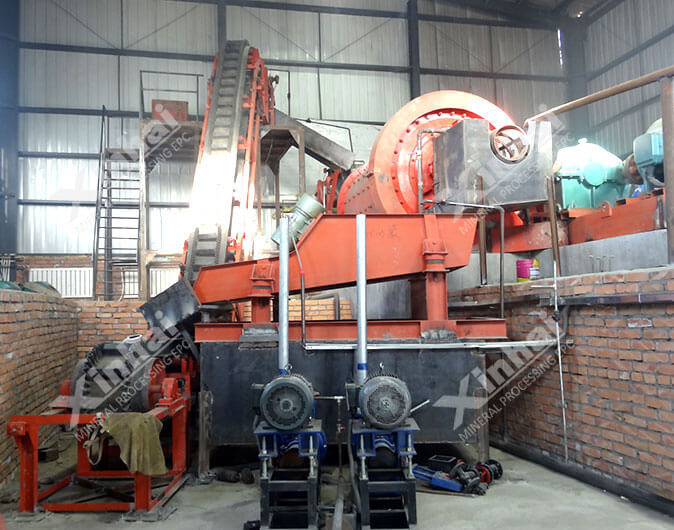
 Consult
Consult
 Leave Message
Leave Message zz540045886@gmail.com
zz540045886@gmail.com 0086 180 0117 3032
0086 180 0117 3032
